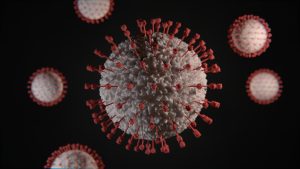Introduction: Since the declaration of the COVID-19 public health emergency in January 2020, the United States government has taken unprecedented actions to combat the pandemic's effects on public health and the economy.
With significant investments and regulatory waivers, the government has provided crucial support for testing, vaccination, coverage, and access to care. However, as the public health emergency comes to an end, it is essential to examine what lies ahead and the next steps in the fight against COVID-19.
As the public health emergency expires, many of the funding and flexibilities that played a crucial role in expanding testing, vaccination efforts, coverage, and access to care are also coming to an end.
The increase in federal funding by 6,2 percent, which provided incentives for state Medicaid agencies to retain individuals in the program, is one notable provision that is expiring. This reduction in funding may pose challenges for Medicaid enrollees and the healthcare providers who serve them.
During the pandemic, the US government played a critical role in COVID-19 testing and tracing by appropriating over $50 billion for these efforts. More than 700 million at-home tests were mailed to facilitate broader access to testing. As the public health emergency ends, it is crucial to ensure that testing and tracing capabilities remain robust.
Ongoing investment and collaboration between federal, state, and local authorities will be necessary to maintain a strong testing infrastructure and monitor the spread of the virus effectively.
In order to facilitate greater access to care for the US population during the pandemic, the federal government provided healthcare providers with financial aid, personnel and material resources, and flexibility.
As the public health emergency winds down, it will be essential to sustain support for providers and ensure access to care for all individuals, including those who were previously uninsured or underinsured. Building on the lessons learned during the emergency, policymakers must continue to prioritize healthcare accessibility and affordability.
As the COVID-19 public health emergency comes to an end, the focus shifts towards long-term strategies for preventing future outbreaks and managing the ongoing impact of the virus.
The next steps involve a comprehensive approach that includes the following:
Vaccination Efforts: Continued emphasis on vaccination campaigns, including booster shots and reaching populations that remain hesitant or face barriers to access.
Surveillance and Monitoring: Strengthening disease surveillance systems to detect and respond to emerging variants and outbreaks swiftly. Robust data collection and analysis will be crucial in making informed decisions.
Public Health Infrastructure: Investing in public health infrastructure to enhance preparedness and response capabilities, including bolstering testing capacity, contact tracing, and supply chain management.
Health Equity: Addressing health disparities exacerbated by the pandemic by ensuring equitable access to healthcare services, focusing on marginalized communities, and providing resources to vulnerable populations.
Pandemic Preparedness: Developing and refining pandemic preparedness plans at all levels of government, with a focus on proactive measures such as stockpiling essential medical supplies, enhancing research and development, and fostering international collaboration.
The end of the COVID-19 public health emergency marks a crucial transition point in the fight against the pandemic. While the support and flexibility provided during the emergency were instrumental in mitigating the impact of the virus, it is essential to maintain and strengthen the gains made.

























